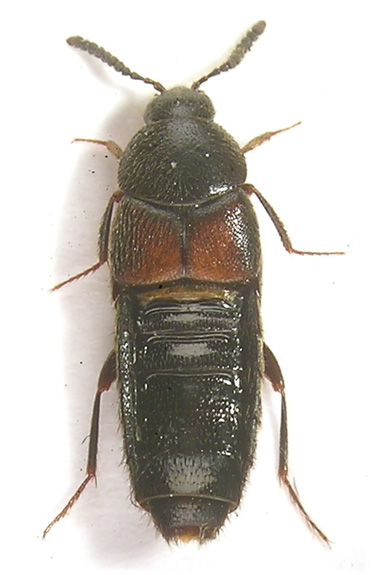
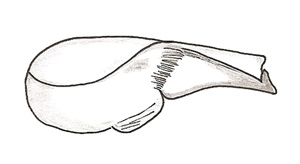
Aedeagus
The large, broad form and colouration make this species distinctive even in the field so that, with a little experience, it will be instantly recognised and recorded.
5-9mm. Small specimens occur when food is limited, the vast majority of specimens seen locally are large. Antennae placed on forehead by front margin of eyes, black with one or two basal segments and sometimes terminal segment brown. Segments 1-3 elongate, 4 transverse, 5-10 much more so; 2.5-3 times as broad as long. Head black, distinctly but sparsely punctate. Eyes large, occupying about half the lateral margin, temples smoothly rounded to base. Pronotum shining black, more finely and densely punctate and pubescent than head, transverse with front angles obtuse, hind angles rounded or barely suggested, hind margin rounded or very weakly sinuate laterally. Bordered throughout, very finely so on front margin. Elytra transverse, red with margins black, or red to hind margin (Entirely black in the superficially similar A.lata, these two species often occur together), more closely punctate than pronotum, hind margin sinuate. Abdomen black, very shining and with strongly raised borders. Segments 1-5 (visible) obliquely impressed laterally close to base. All segments densely punctate at base, becoming sparse towards apical margins. Last visible segment weakly emarginate in male, entire in female. Entire upper surface with recumbent pale or yellowish backwardly directed pubescence. Legs and palpi brown, generally lighter than elytra. Tarsi 5-5-5. Front and mid tibiae with small teeth along outer margin and all tibiae with two apical spurs on inner side.
The adeagus is unique in having a raised 'hook' along the apex. The only species likely to be confused with A.curtula is A.discipennis Mulsant and Rey, a rare dung inhabiting species. In A.discipennis the antennal segments are not so transverse, the adeagus lacks the apical hook and the mesosternum is raised into a central longitudinal ridge, whereas in A.curtula it is smooth. Joy's key uses 'moderately strongly transverse/very strongly transverse' (antennal segments) to separate these species so care must be exercised to view the segments from their widest aspect, in any case A.discipennis would be a significant find so the mesosternum should always be examined.
¹ For an excellent review of the British species of Aleochara the reader is referred to R.C. Welch's 1997 paper in the Coleopterist Vol 6 1-45.
Description from 4 Watford specimens at X40
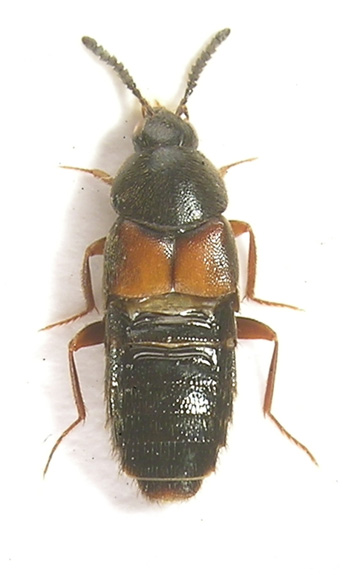
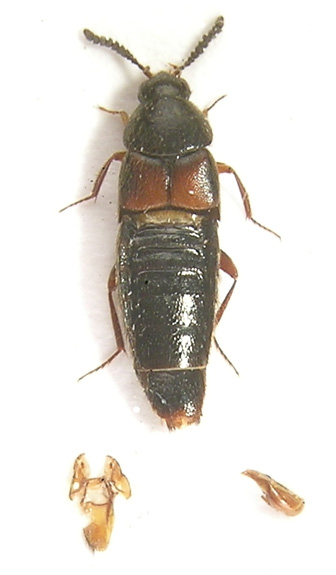
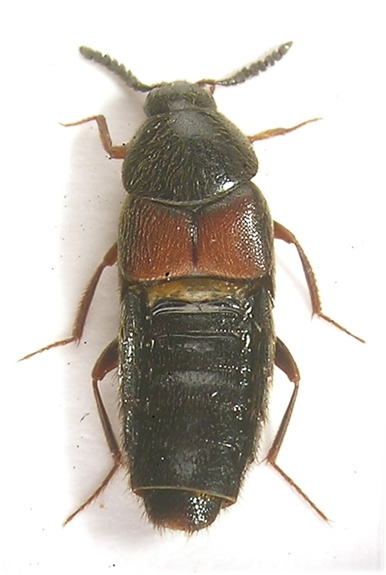
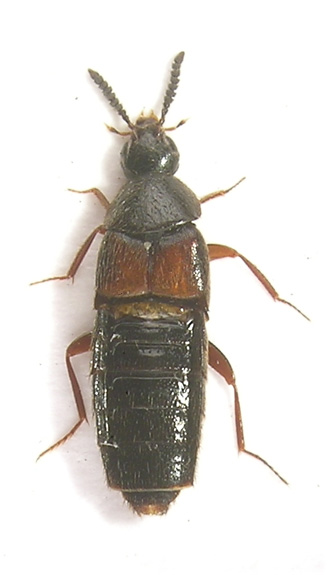
Home